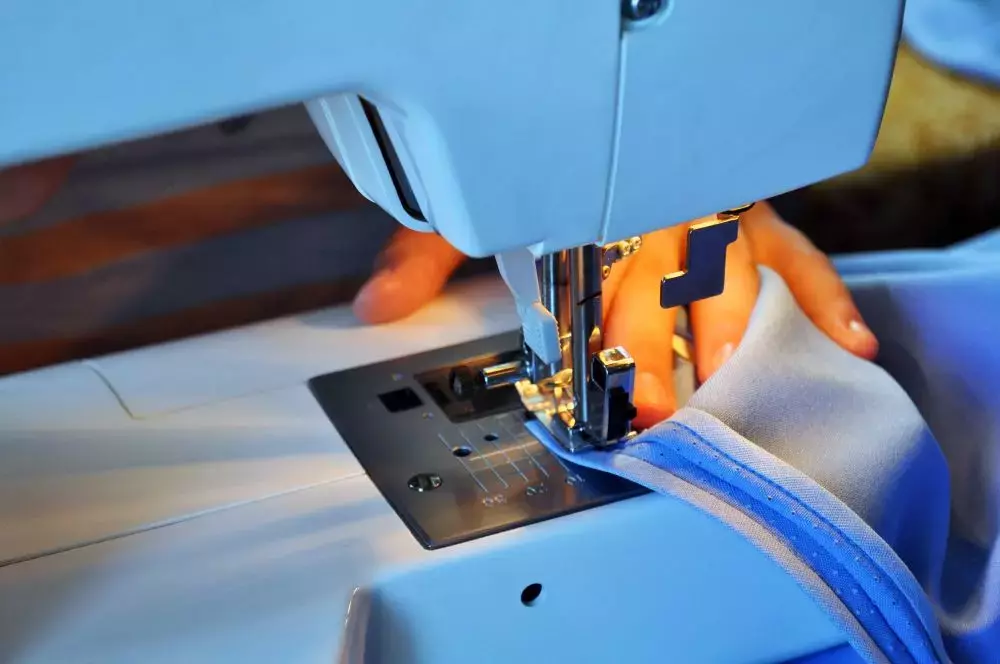6 Ways to Finish Seams without an Overlocker
2019-09-06
If you don't know what an overlocker is, don't worry. Many people start sewing without knowing about this valuable "tool," and it's possible to continue sewing without it. But what it does is pretty handy.
An overlocker is a machine that uses multiple threads to enclose, sew, and trim the seam. That's right, most overlockers have a little running blade which is pretty intimidating.
But, how did people finish seams before these inventions came to the industrial scene and eventually to home sewers? The old-fashioned way, that's how! You can turn to traditional seams such as the zig-zag, French seams, turn and stitch, and more.
Finish a Seam with a Zig-Zag
Sew your seam as usual and then press it open. Run a zig-zag stitch over each exposed raw edge creating two lines of zig-zag stitches. Alternatively, you can press your seams to one side and only zig-zag over that one exposed edge.
Don’t know how to sew a pin and sew a seam? Learn how to easily pin and sew your seam.
Finish with French Seams
French seams are amazing, and once you figure it out, extremely easy. They can deliver a high-quality and professional finish on any seam, and most people come across them in sheets or other blanket designs. However, you can often make them work for garments and other projects as well.
Start by putting the wrong sides of the two fabrics together with a 1/4-inch seam allowance. Then trim the edges down and press the fabrics together. Turn the fabric and encase your raw edges in a second seam.
Turn and Stitch to Finish Your Seam
This seam stitch is also known as the “clean finish.” Take your seam and press it open. Then measure your seam allowance and initially turn over about a third of that allowance. Treat each side separately. For example, if your seam allowance is 1.5 cm then turn half of a centimeter under the edge and go over it with a straight stitch (over both separate seams) as close to the fold as you dare
Use a Mock Overlock
The mock overlock is usually a single preset stitch on a sewing machine an overedge or overcast. This stitch is pretty easy and works well on nearly any fabric but is especially a good fit for knit fabrics.
Try Using Pinked Seams
Create a normal seam and then press them open. Go over the raw edge with pinking shears and cut the pieces. The effect is a professional seam that has a fun element at play. Not to mention it saves a ton of time because you're stitching one seam.
Ideally, you'll only use this on fabric that doesn't gray and won't go through a ton of wear and tear. Cotton blends are perfect for this, and it's great for bags or accessories.
Incorporate the Bound Edged Seam
Like many other seams, the bound edge seam goes by other names as well. Originally called the Hong Kong seam and modernly called the bias bound seam, they all refer to the same method. These seams are known for being present in couture and showcase exceptional quality for the garment.
Take bias tape and wrap it around your raw seam edges. Then stitch them into the bias fold closing the bias tightly around the raw edge.
Or, sew your seam and then press it open. Sew the bias into the seam right-side in if using a pattern with a 1/4-inch seam allowance. Then fold the bias over the seam and around the other raw edge and press it again. Then stitch into the bias seam, and it should hit in such a way that you can’t see the straight stitch.
There are many ways to achieve this stitch, and you could even use a bias binder foot that will make the whole process much easier. If you’re determined to learn this stitch, then you need to focus and take your time to space your stitching appropriately. Work slowly.





